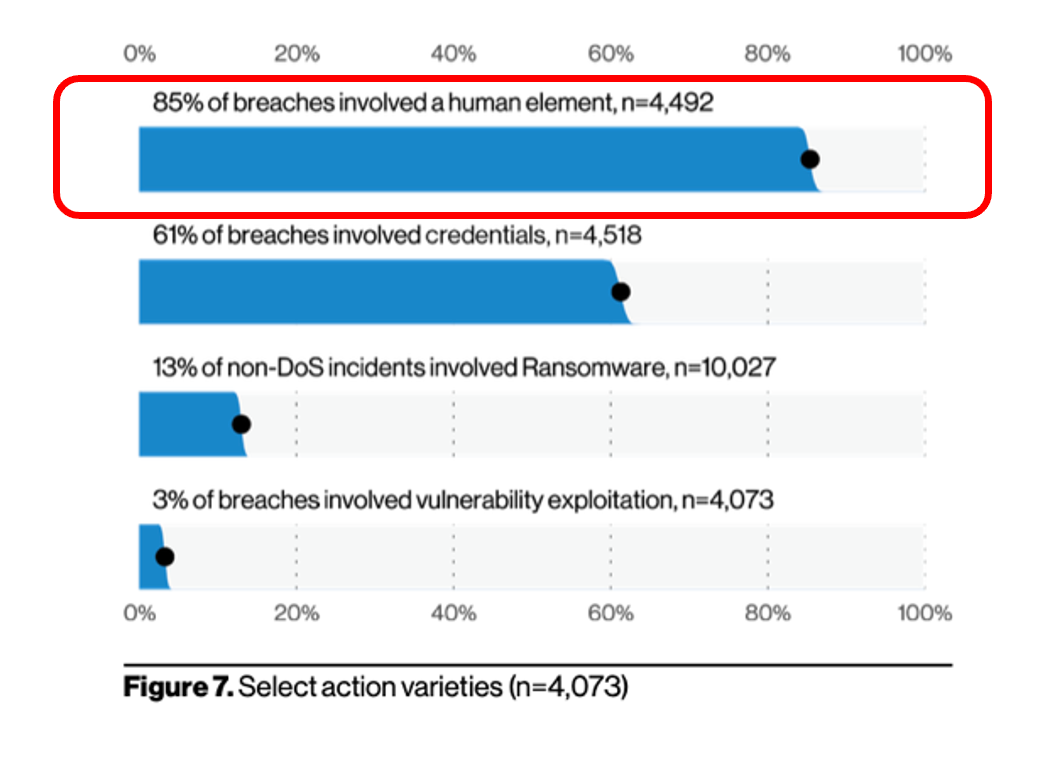SEC504: Hacker Tools, Techniques, and Incident Handling


Experience SANS training through course previews.
Learn MoreLet us help.
Contact usConnect, learn, and share with other cybersecurity professionals
Engage, challenge, and network with fellow CISOs in this exclusive community of security leaders
Become a member for instant access to our free resources.
Sign UpMission-focused cybersecurity training for government, defense, and education
Explore industry-specific programming and customized training solutions
Sponsor a SANS event or research paper
We're here to help.
Contact UsThis year's key finding is loud and clear, the human element is by far the largest risk.

Once a year every year, the Verizon Security team releases what is known as the Verizon Data Breach Incident Report, also known as the VZ DBIR. This annual report is known and respected as one of the world’s best data driven reports on incidents and breaches at a global level. What I love about this report is
There are several special things about this year’s report. The first is I had the opportunity to interview two of the authors behind the report, Alex Pinto and Gabriel Bassett. Alex and Gabriel were kind enough to help us better understand their thought process and findings. Second, we are very excited to announce that both of them will also be speaking at the SANS Security Awareness Summit this 5/6 August, further discussing the topic of human risk.
For 2021 one key finding is loud and clear; the human element is by far the largest risk. In fact, the report clearly calls out that human interaction was involved in over 85% of breaches. By human interaction the report means breaches that involved actions such phishing attacks, cyber attackers using easily guessed passwords, human error, intentional misuse of privileges, or even bad decisions leading to malware infections.

In addition, human risk has become such a common element in incidents and breaches at a global level that after fourteen years the VZ DBIR had to change how they structure their report to include changing their infamous “Patterns” to include “Social Engineering” (p. 31 of the report). As security awareness professionals, there are two key ways you can leverage this data-driven report.
Here are the key points I took away from the report.
There is a huge wealth of knowledge in the report that we have not even touched on. For example, to include data on SMBs (Small-to-Medium Businesses), data based on Region and in-depth descriptions of their approach and methods used for data analysis. I highly recommend this report for any organization attempting to manage their cyber risk, for me it’s the gold standard for actionable reports.
To learn more about SANS Security Awareness’ product offerings and free resources visit us here!


Lance revolutionized cyber defense by founding the Honeynet Project. Over the past 25 years, he has helped 350+ organizations worldwide build resilient security cultures, transforming human risk management into a cornerstone of modern cybersecurity.
Read more about Lance Spitzner